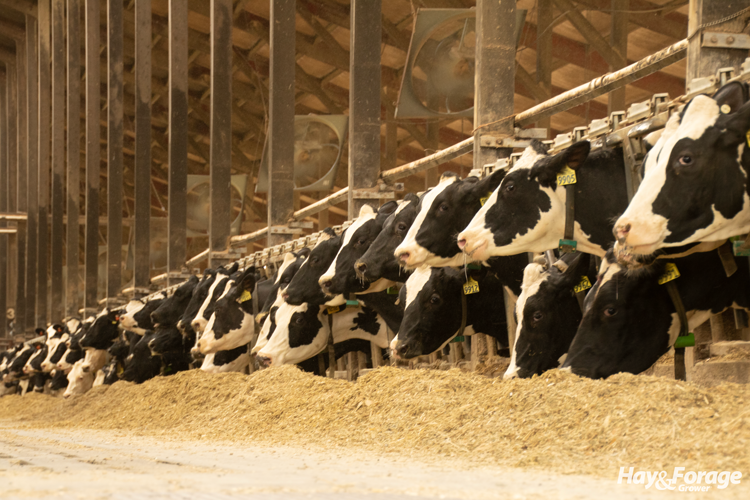
The University of Wisconsin’s Randy Shaver and his colleagues developed the MILK2006 model nearly 20 years ago. This model proved incredibly useful for a range of researchers and industries, including plant breeders, plant pathologists, agronomists, nutritionists, and dairy and beef producers. Rarely does anything last more than five to 10 years, yet the MILK2006 model did just that. Agronomists and plant breeders built entire programs around the milk per ton and milk per acre benchmarks.
Still today, I regularly get asked for my thoughts regarding a specific milk per ton outcome, but with age and over the past five years, the MILK2006 model has become outdated. While the seed and agronomy industries still partly rely upon the MILK2006 model, nutritionists have moved on. They’ve done so for reasons much like why one would upgrade to a new truck, smartphone, or computer — the old model is lacking key features. As a new truck might offer an updated interior or new drivetrain, the MILK2024 model now has key fiber and starch digestibility input features that nutritionists depend on.
The MILK model has historically relied upon published research and energy models. Originally developed in the 1990s, the 2006 model update was built upon the Nutrient Requirements of Dairy Cattle 7th revised edition (NRC), published in 2001. At the time, this was a sizable advance with the energy model nested in the 2001 NRC being a summative model, largely built by The Ohio State University’s Bill Weiss and colleagues.
This summative energy model approach adds up digestible protein, digestible fiber, fat, and nonfiber carbohydrate. The digestible nutrient amounts are determined by nutrient content and nutrient digestibility. For example, corn silage with 40% of dry matter being fiber, and the fiber being 50% digestible, would then contain 20% of dry matter as digestible fiber. The math is 40 units of fiber multiplied by 50% fiber digestibility equals 20 units of digestible fiber.
The MILK2006 model extracts starch from the nonfiber carbohydrates and invites users to input a feed analysis starch content. The underlying model then applies a moisture and kernel processing score adjustment to determine starch digestibility and digestible starch contribution.
Inherent problems
MILK2006 was forward thinking at the time; however, now commercial laboratories analyze and report rumen starch digestibility. Further, fiber digestibility analysis has advanced considerably and beyond what MILK2006 can utilize. For these two reasons, over the past decade, I’ve written various unique equations to estimate total digestible nutrients in different ways as new nutrient digestibility measures come available.
Building upon Weiss and Shaver’s summative energy model approach, I first adapted total tract fiber digestibility (TTNDFD) into a total digestible nutrients (TDN) and energy model to evaluate silage hybrids or alternative feed options. Later, as rumen starch digestibility measures came along, I brought rumen starch digestibility into the TDN equation to differentiate hybrids or feeds that may differ substantially in starch digestibility. I estimated intestinal starch digestibility using equations published by the University of Wisconsin’s Luiz Ferraretto’s lab.
Of note, I believe this is an area where we can still make sizable strides. While leading commercial laboratories are measuring rumen starch digestibility, there is not a general consensus as to what rumen procedure is ideal. Corn grain and silage rumen starch digestibility data distributions appear to differ between laboratories. At this point, exercise caution when comparing starch digestibility results between laboratories.
In with the new
Circling back to the MILK model, the next update is upon us thanks to the efforts of Ferraretto and his graduate student Cole Diepersloot. Similar to the 2006 model, the MILK2024 approach incorporates published energy equations into a corn silage evaluation model. This 2024 update brings the energy model from the 8th revised edition of the Nutrient Requirements of Dairy Cattle, authored by a committee commissioned by the National Academy of Sciences, Engineering, and Medicine. The acronym NASEM is regularly used to describe this new energy model and biology within nutrition discussions.
The NASEM model differs substantially from the one in 2001 NRC and departs from the summative approach that easily worked to estimate feedstuff energy value. One of the major advances with the NASEM approach is that nutrient and ingredient interactions are now modeled.
Digestion and metabolism interactions are a fact within dairy and beef nutrition. For example, excessive grain and starch in the diet can negatively impact rumen pH and subsequently depress fiber digestion. The NASEM approach actually discounts fiber digestion with increasing starch; however, the entire diet must be known and entered for the model to function. This fact is problematic for the MILK modeling approach, where only a corn silage analysis is inputted. Ferraretto and Diepersloot worked around this by including a standard lactating dairy cow diet behind the scenes, which helped model the corn silage milk per ton output effectively. The MILK2024 model also permits users to dynamically model fiber and starch digestion, which is a necessary advance given today’s carbohydrate measures.
Ultimately, the MILK2024 model is an exciting advance for all of those involved in the dairy industry. Commercial laboratories will begin reporting MILK2024 outputs in the near future. We’re now upgraded to the latest model, just like that new truck or phone with all the current features.
This article appeared in the April/May 2024 issue of Hay & Forage Grower on page 12.
Not a subscriber? Click to get the print magazine.

